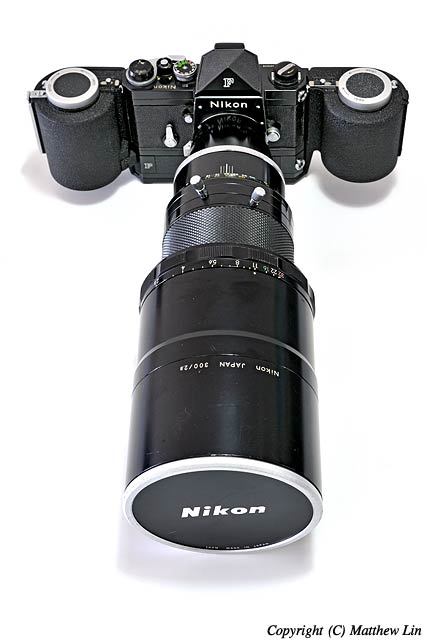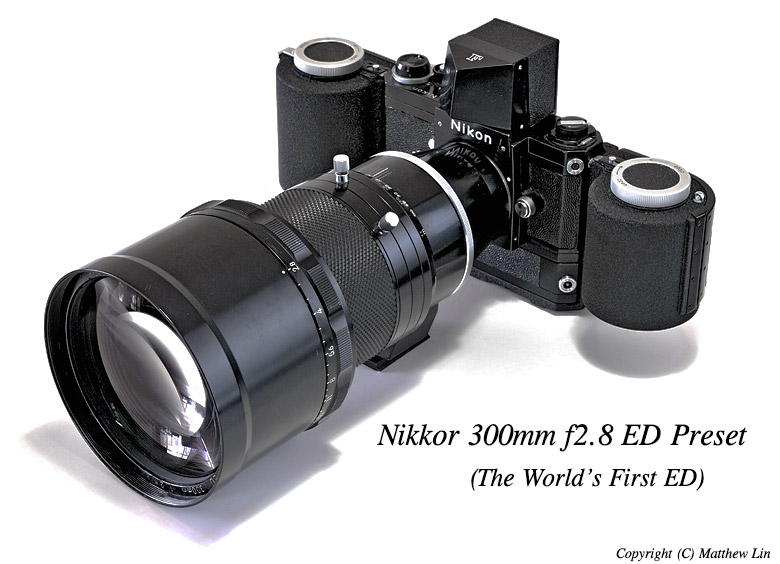 |
|||||||||||||||||
| Nikon has always been devoted to developing new glass material. The ED glass that is so commonly used today was also pioneered by Nikon in the 70's. In order to meet the demand of news and sport photographers, Nikon saw the need to develop high performance telephoto lens. One of the biggest problems they had to tackle was chromatic abberation. Chromatic abberation causes colour smearing and loss of sharpness in large aperture lens like 300mm f2.8. The use of Extra-low Dispersion glass ( ED ) can effectively iliminate this problem. The first pre-production Nikkor-H 300mm f2.8 was announced in 1971. A total of 72 units were made with serial numbers running from 603011 to 603082. This batch of pre-production lenses were exclusively for press photographers. Nikon was keen to release this lens before Sapporo Winter Olympics in Feb 1972, even though their in-house developed ED glass was still not ready yet. Nikon had to settle for a different glass material manufactured by German company SCHOTT GLAS. The first Nikkor-H 300mm f2.8 therefore did not carry the "ED" markings. It may seem strange that Nikon chose to use pre-set aperture when designing this lens. Apparently, the advice Nikon had gathered from the professionals then was to give prority to high optical performance rather than automatic aperture. They believed that such lens would be used mainly at the largest aperture anyway. Stopping-down would only happen when time was not critical. Since there was no aperture linkage to worry about, Nikon could freely put the aperture at the most ideal location for optical desgin and use numerous aperture blades to achieve the best possible "Bokeh" (aesthetic quality of the blur in out-of-focus areas). Also, having the aperture and focus control in the front means that the entire forward section can be detached and used on the other optical systems e.g. Video camera. In fact, this lens, with an image circle covering 60mm x 60mm, was originally designed to be used as "Bronica-Nikkor" as well. |
|||||||||||||||||
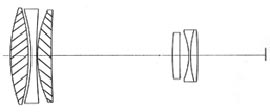 |
|||||||||||||||||
The cross section of the 300mm f2.8. The lined elements shown on the left diagram designate ED glass. This lens was designed by Mr Yoshiyuki SHIMIZU, the same person who designed so many other legendary lenses like 105mm f2.5. |
|||||||||||||||||
In Oct 1975, Nikon released the second pre-production 300mm f2.8 with Nikon's own ED glass. This was also the first lens ever to carry the "ED" markings. (The lens was marked as Nikkor*ED instead of Nikkor-H) Apart from the ED glass, Nikon also upgraded the lens with multi-layer coatings. It aimed squarely at the Summer Olympics in Montreal. Once again, the second pre-production version was made only in small quantity and was not available to general public. The serial numbers of the second version started from 604011. The highest recorded numbers are 604088 as illustrated in Peter Braczko's Book. The copy in my collection belongs to the second version with ED markings. Although my lens is in good cosmetic conditions and fully functional, regretably the previous owner decided to scratch out the serial numbers for unknown reason. |
|||||||||||||||||
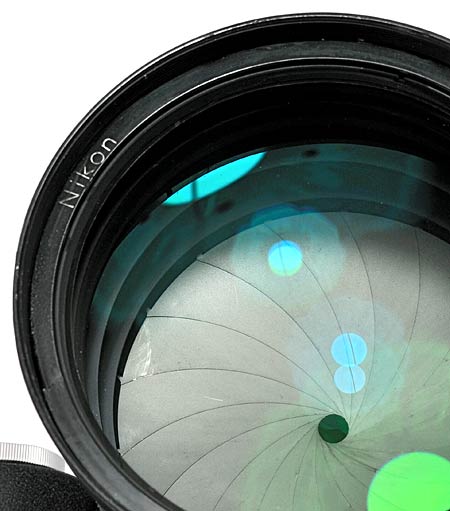 |
|||||||||||||||||
The 18-blade aperture and the multi-layer coatings. |
|||||||||||||||||
Neither of the two pre-production versions went into mass production in the end. The total production numbers for the 2 versions combined were well under 200 units. Many were damaged through heavy professional use. Either one of them is EXTREMELY hard to find for collectors. By comparsions, the rare tick mark lenses are at least 15 to 70 times more abuntantly available! It was not until 1978, Nikon finally released the first production version of the ED 300mm f2.8. It was further modified with internal focusing design (IF) and AI automatic aperture. |
|||||||||||||||||
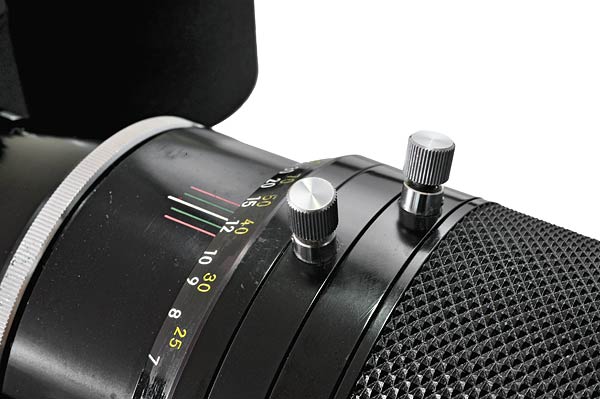 |
|||||||||||||||||
There are two focus pre-set rings. They allow you to quickly turn the focus ring to 2 pre-selected locations. A very useful tool for quick action photos when you don't have the luxury of modern autofocus . |
|||||||||||||||||
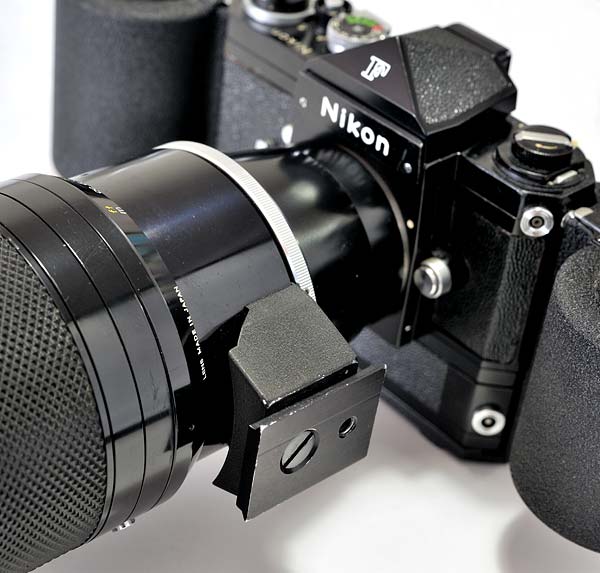 |
|||||||||||||||||
The lens mount can be rotated through 90 degrees for veritcal shooting on tripods. |
|||||||||||||||||
|
|
|||||||||||||||||
The dedicated lens hood is screw-in type. The metal lens cap can be mounted on the lens hood or on the lens directly. The lens thread takes 122mm filter. |
|||||||||||||||||
 |
|||||||||||||||||
Photo taken with the 300mm f2.8 ED (Handheld): Camera Nikon D700; f2.8; 1/5000s, ISO400 |
|||||||||||||||||
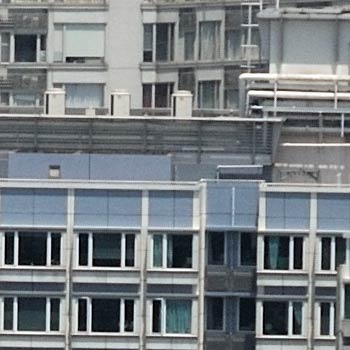 |
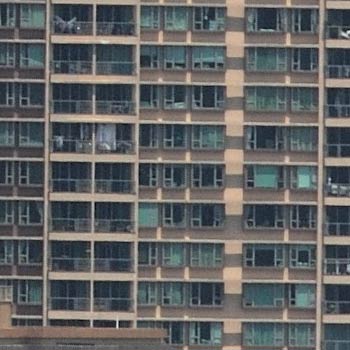 |
||||||||||||||||
100% crop from the centre. No sharpening |
100% crop from the top left corner. No sharpening |
||||||||||||||||
Created on 28 Jan 10 |
|||||||||||||||||
